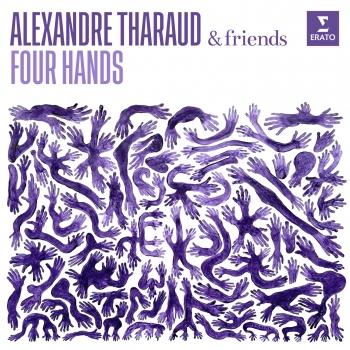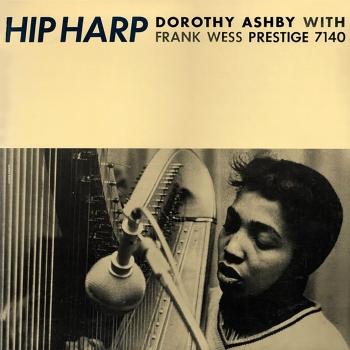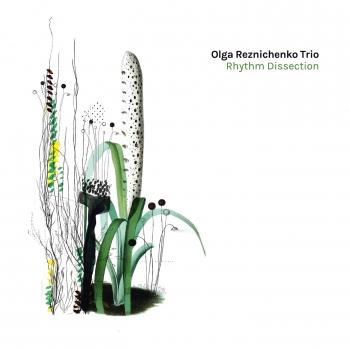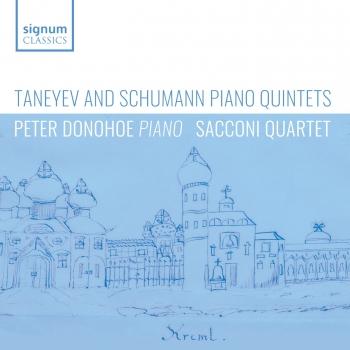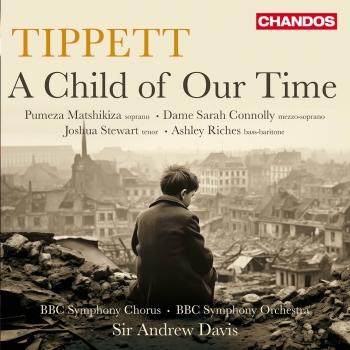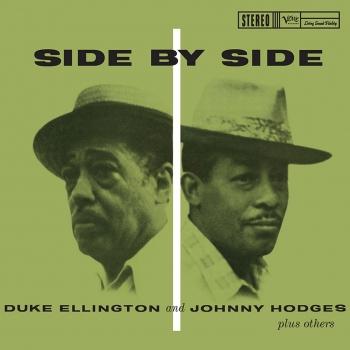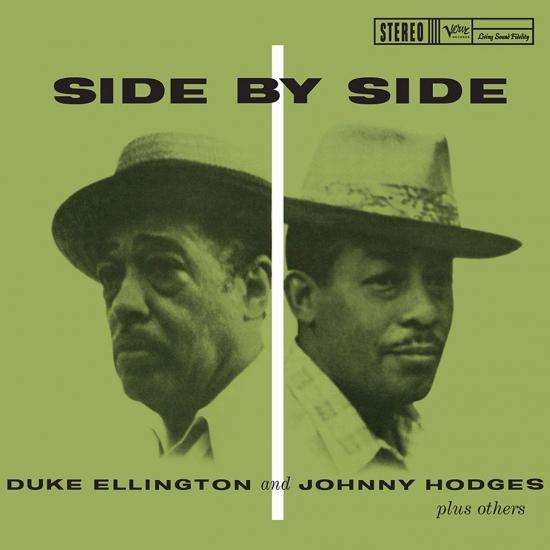
Side By Side (Remastered) Duke Ellington & Johnny Hodges
Album info
Album-Release:
1959
HRA-Release:
28.03.2018
Album including Album cover
I`m sorry!
Dear HIGHRESAUDIO Visitor,
due to territorial constraints and also different releases dates in each country you currently can`t purchase this album. We are updating our release dates twice a week. So, please feel free to check from time-to-time, if the album is available for your country.
We suggest, that you bookmark the album and use our Short List function.
Thank you for your understanding and patience.
Yours sincerely, HIGHRESAUDIO
- 1Stompy Jones06:37
- 2Squeeze Me04:35
- 3Big Shoe05:33
- 4Going Up04:50
- 5Just A Memory05:52
- 6Let's Fall In Love06:46
- 7Ruint02:32
- 8Bend One02:58
- 9You Need To Rock05:51
Info for Side By Side (Remastered)
When Norman Granz signed Johnny Hodges to a recording contract in 1951, it was a prelude to Hodges's leaving the Duke Ellington orchestra to lead his own small band. Four years later Hodges was back in the Ellington fold, but he continued to record for Granz under his own name. Side by Side, recorded in 1958 and 1959, is a throwback to the small-group sessions Ellington recorded with Hodges and other members of his orchestra in the Thirties, but with a couple of important differences: the absence of Ellington himself on several cuts (with Billy Strayhorn taking over at the piano), and the presence of such notable non-Ellingtonians as drummer Jo Jones and trumpeters Roy Eldridge and Harry "Sweets" Edison.
The most awesome, the most swinging rhythm group of all times! Fantastic winds! There’s only one guy who can make an alto saxophone sound like this – somewhere between melancholy and aggressiveness! Superlative after superlative come to mind when you listen to these nine numbers, which were recorded at the end of the Fifties.
The idea of scaling down Ellington’s band for jam-session-like numbers is absolutely genial because it offers soloists great opportunities to display their artistry. And these wind musicians are the best of the best, masters of their instruments. We have Roy Eldridge, who influenced the transition from swing to be-bop and a modern style of trumpet playing; Harry Edison, whose light and airy Basie-swing style cannot be denied; and Ben Webster, who amalgamates both the Count’s and the Duke’s style of swing. And then there is Johnny “The Rabbit” Hodges, whose natural feeling for rhythm and gentle tone is brought to optimal expression within this concept.
Squeeze Me and Stompy Jones both stem from the Forties and are often performed, but in this session they have been rejuvenated in a masterly fashion. The standard Let’s Fall In Love demonstrates Lawrence Brown’s highly personal sound on the trombone and then goes on to spotlight Roy Eldridge and Johnny Hodges, both of whom prove that they are at the very zenith of their artistic prowess. Ruint and Going Up provide a showcase for Johnny Hodges, while Just A Memory focuses on the gentle, sometimes rather sentimental sound of Ben Webster.
Duke Ellington, Piano
Johnny Hodges, Alto Saxophone
Ben Webster, Tenor Saxophone
Roy Eldridge, Trumpet
Harry "Sweets" Edison, Trumpet
Lawrence Brown, Trombone
Les Spann, Flute & Guitar
Billy Strayhorn, Piano
Al Hall, Bass
Wendell Marshall, Bass
Jo Jones, Drums
Original sessions produced by Norman Granz.
Tacks 1, 2, and 4 recorded February 20, 1959, Columbia Studios, New York City.
Tracks 3 and 5-9 recorded August 14, 1958 at Nola Studios, New York City.
 Johnny Hodges - Alto Saxophone
Johnny Hodges - Alto Saxophone
In one sense or another, Johnny Hodges was always on his own — even on the Ellington bandstand, where he began and became best known. He joined Ellington early in life, at twenty in 1928, and he died a member of the Duke Ellington Orchestra, suffering a heart attack in a dentist’s chair shortly after recording part of his lifelong boss’s New Orleans Suite in 1970. As a result, his sound, or his two principal sounds — the lusty warmth of his ballad readings and the offhand lilt of his uptempo improvisations — are inevitably associated with Ellington. Yet Hodges’s voice came entirely from within; as Ellington put it, he "is a consummate original." Indeed, Hodges is now widely acknowledged as one of the most individualistic interpretive voices in all jazz.
As a solo artist away from Ellington, Hodges had three mini-careers during his tenure with Norman Granz and the labels he launched: independent bandleader, after he resigned from the Ellington organization, 1951–55; soloist, mostly leading ensembles of Ellington orchestra members after he reunited with Duke, from 1956–61; and would-be jazz-pop star, working with the hit-oriented producer Creed Taylor, 1961–70.
Duke Ellington - Pianist
The child of loving and relatively well-to-do African-American parents, Edward Kennedy "Duke" Ellington was born on April 29, 1899, in Washington, D.C. — not only the capital of the United States but, at that time, home to the largest and best-educated black population in the country. As he became a teenaged bandleader, he learned to appreciate the unique aspects of every musician in his group, and he was later able to reconcile these differences and utilize them in an innovative and completely democratic way. He inspired confidence in his musicians. After building a successful dance band business in Washington, he moved to New York City in 1923.
The Duke cultivated exotic sounds in his orchestra: an emphasis on contrast between the low- and high-pitched instruments, a prominent use of minor keys and blues tonalities, a style he called jungle music, and unusual effects drawn out or encouraged from his instrumentalists and vocalists.
By the late 1920s, Ellington’s musicians had all developed into distinctive soloists. Among the great players who worked with Ellington over the years were saxophonists Johnny Hodges, Harry Carney, and Ben Webster; clarinetists Barney Bigard and Jimmy Hamilton; trumpeters Bubber Miley, Cootie Williams, Rex Stewart, and Ray Nance; trombonists Joe "Tricky Sam" Nanton and Lawrence Brown; bassist Jimmy Blanton; and drummer Sam Woodyard. That array of talent remains awe-inspiring and will continue to influence future generations of jazz musicians. The maestro also easily participated with, and challenged, such younger innovators of the 1960s as bassist Charles Mingus and saxophonist John Coltrane.
Perhaps more consequential was "Mood Indigo" which became one of the first pieces written by a jazz composer to be accepted by the public as a popular song. From this point on, Ellington developed into a major contributor to the American popular-song repertoire, writing such other hit tunes as "In a Sentimental Mood," "Prelude to a Kiss," "Sophisticated Lady," "Solitude," and "Satin Doll." However, the piece most people associate with Duke Ellington, "Take the ‘A’ Train," was written by pianist-composer Billy Strayhorn, who joined Ellington in 1939 and became his closest associate. Saddened but not defeated by Strayhorn’s death in 1967, the Duke continued to compose, play, and tour with his world-famous orchestra until his own death on May 24, 1974.
Of the first generation of jazz musicians, Ellington and Louis Armstrong were the most responsible for moving jazz from a form of entertainment to a form of artistic expression. Over six decades, from the 1920s to the 1970s, Ellington continually expanded his scope and range of expression, for he was somewhat of an anomaly in the jazz world: a composer. (Andrew Homzy /Excerpted from Duke Ellington’s Finest Hour)
This album contains no booklet.

